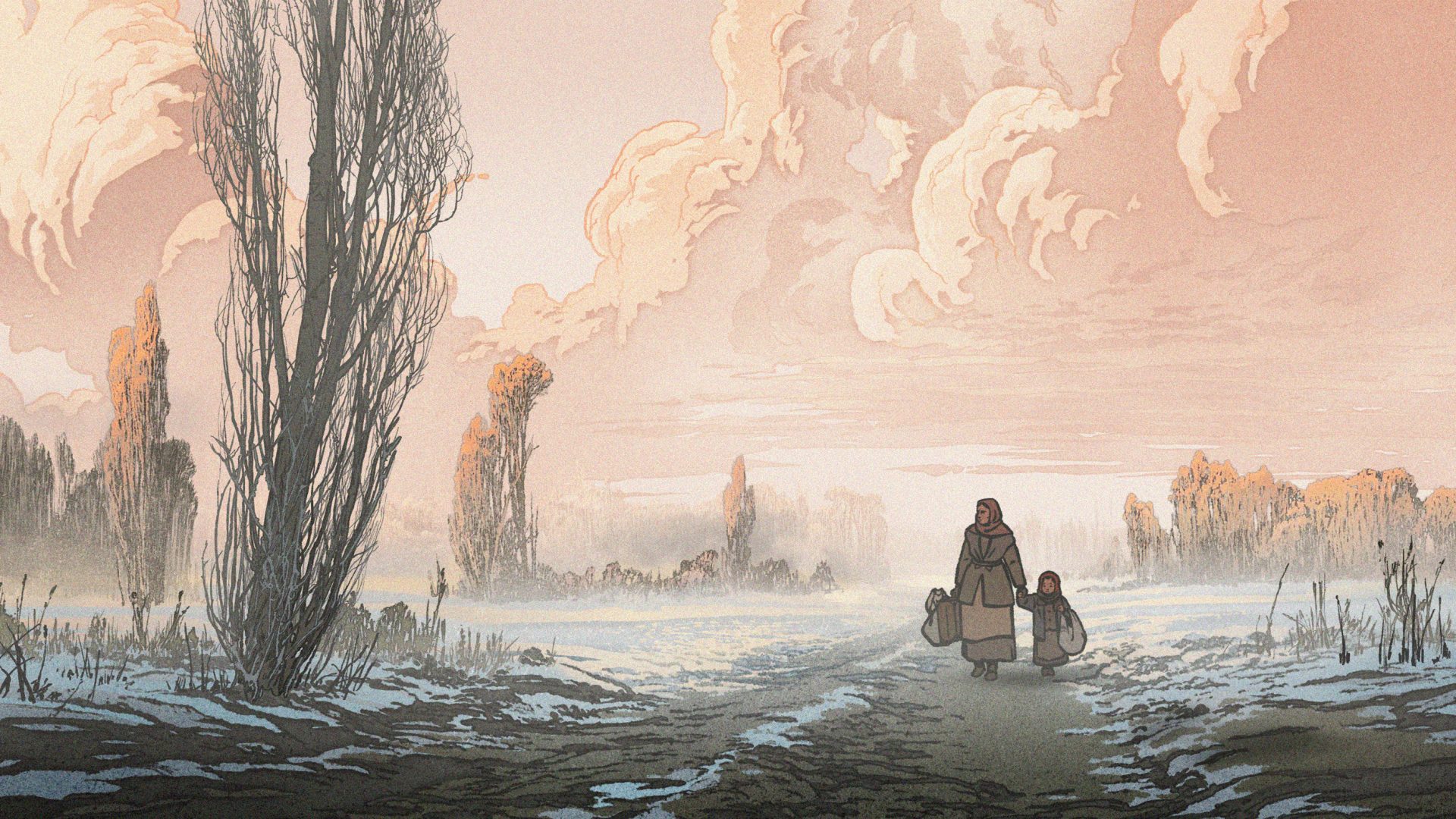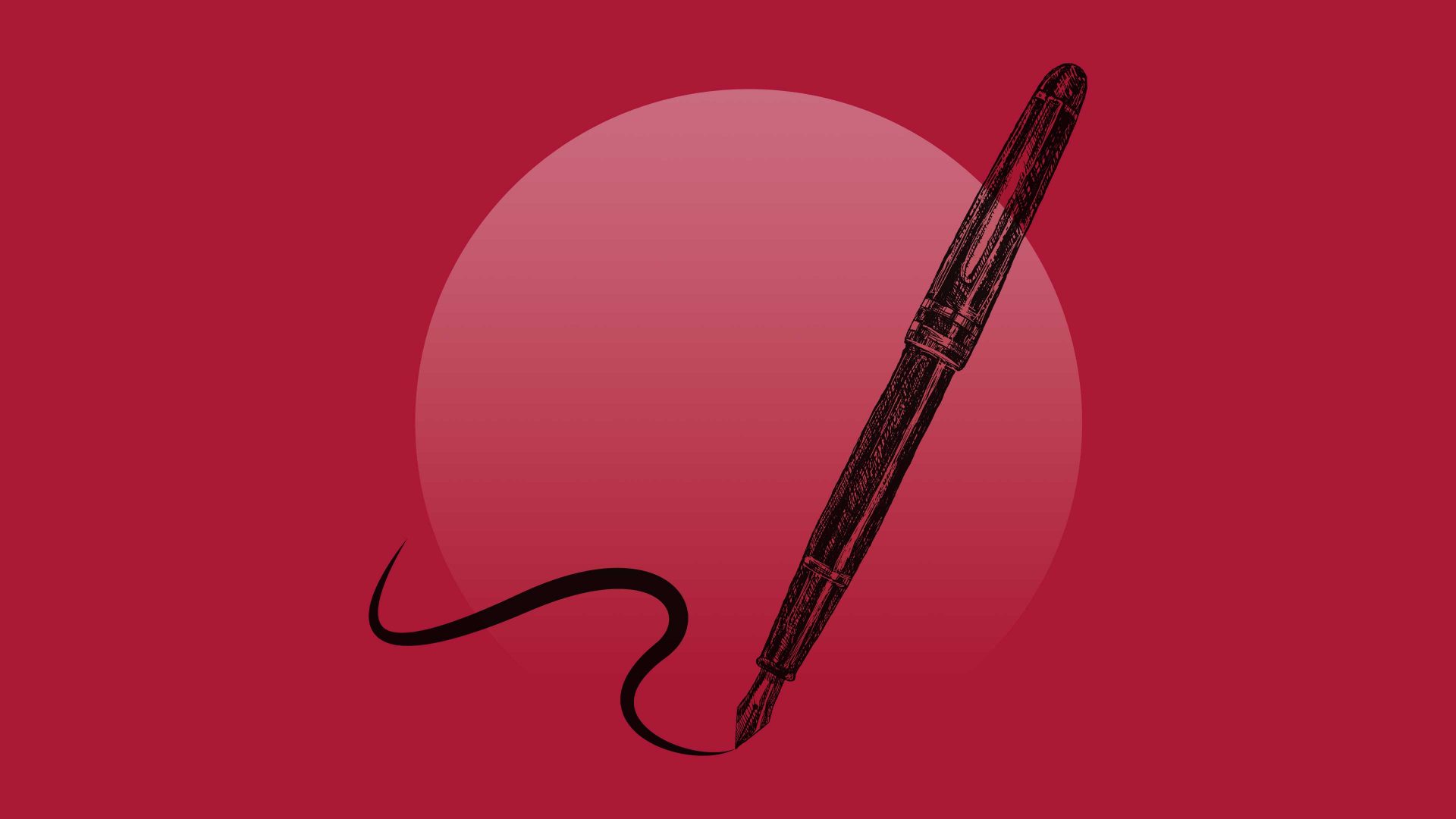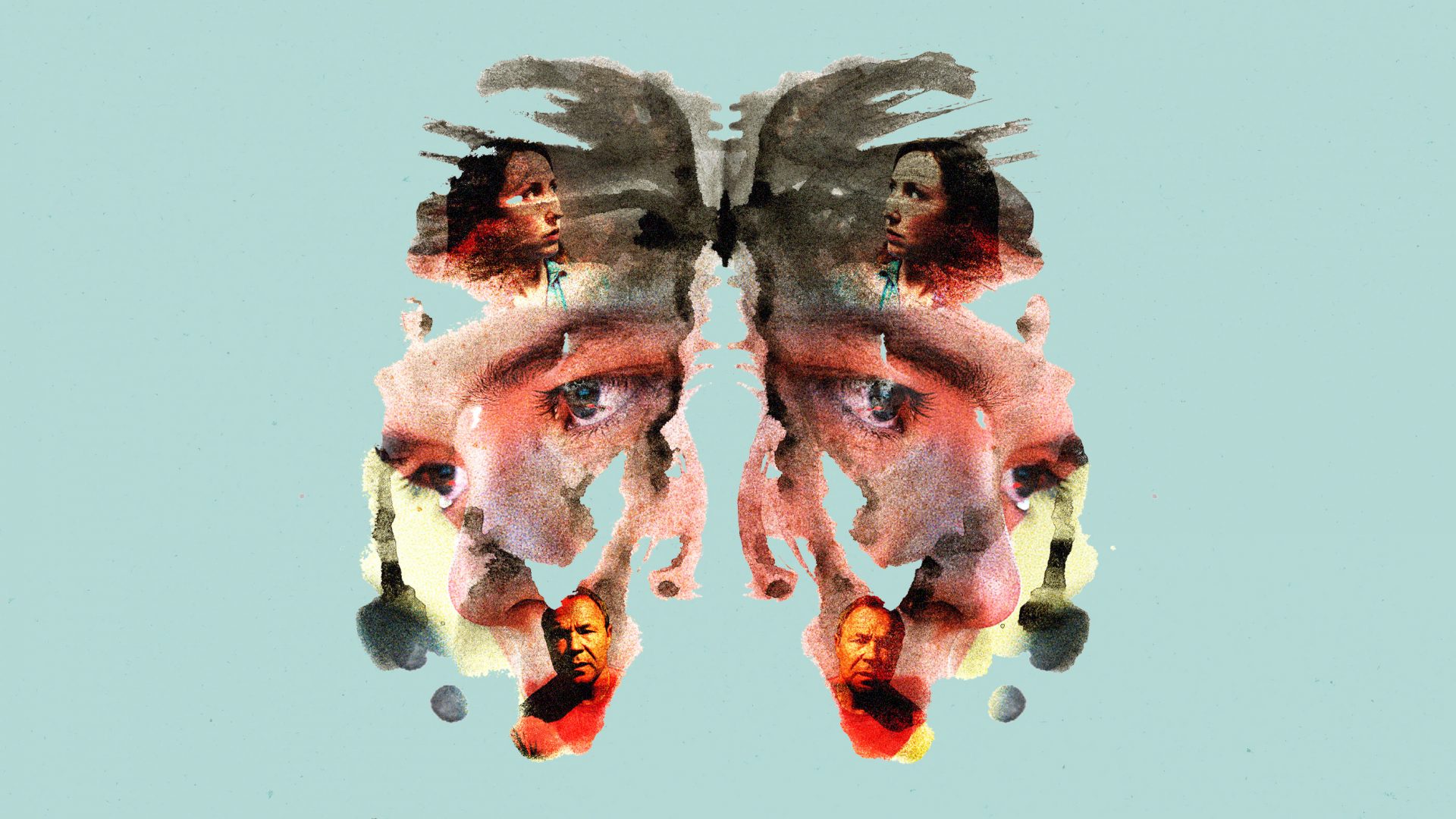Michel Hazanavicius is famed for one of the most unlikely Oscar wins of all time. He shepherded The Artist, a silent, black and white French movie, starring actors unknown outside of French TV, all the way to the biggest prizes in cinema, including best director and best picture, at the 2012 ceremony in Hollywood.
His career since then has plotted an unlikely and unpredictable path, all the way to his latest film, an animated fairytale set around Auschwitz and the Holocaust, called The Most Precious of Cargoes.
“I don’t use the word Holocaust,” he admonishes me, in the warmest and gentlest way possible. “I call it the Jewish genocide, because Holocaust, as a word, implies at its root, the notion of sacrifice. And there was no sacrifice here. So I never say Holocaust.”
Except, in this particular story, there is sacrifice, when a baby is thrown from a crowded goods train heading towards, we imagine, the death camps. A father on board spots a small enough crack in the wooden doors and a brief opportunity to save his daughter, or at least give her another fate.
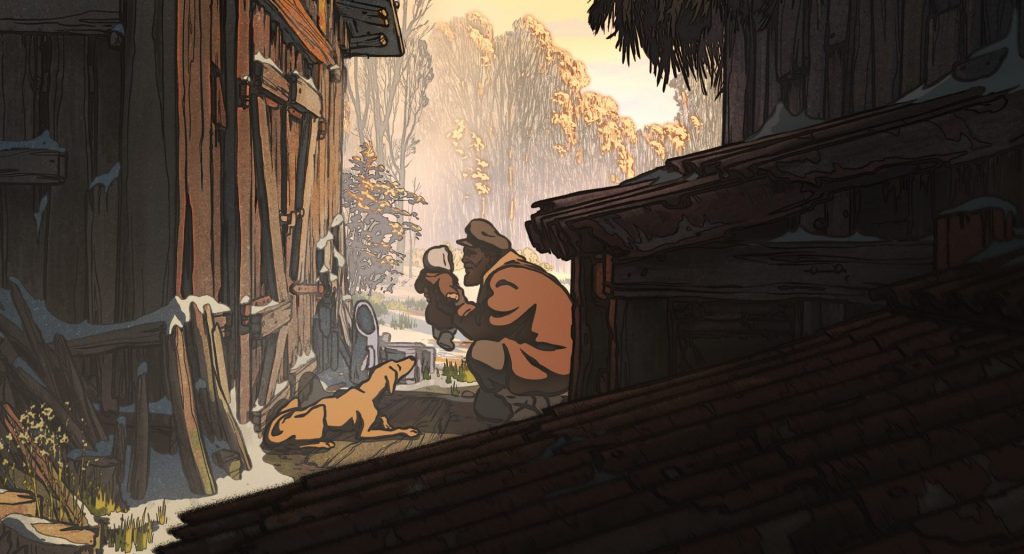
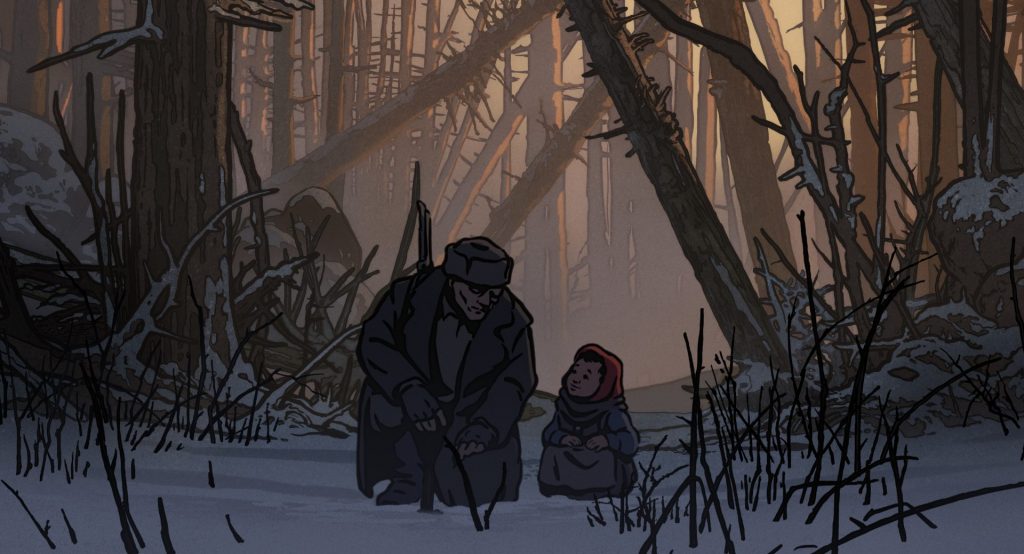
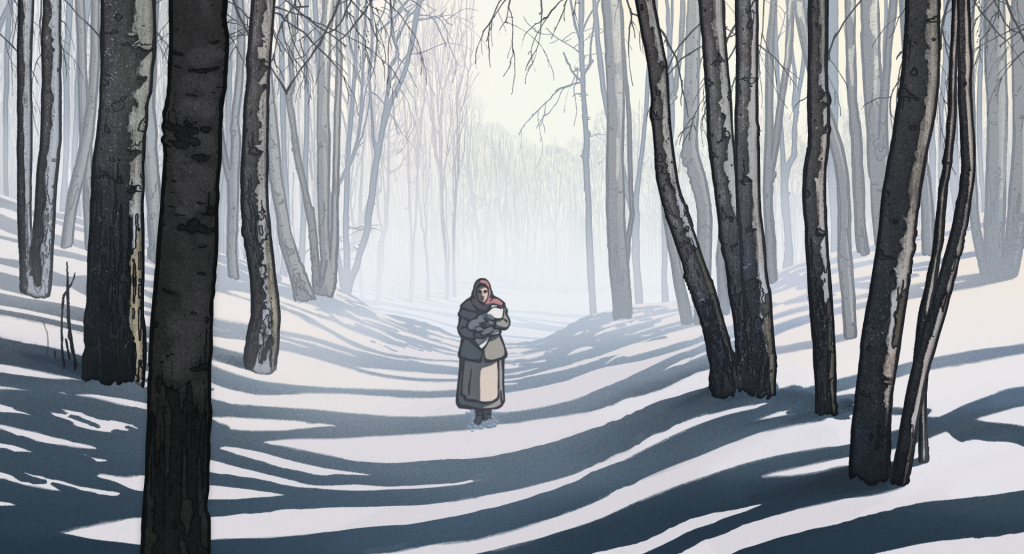
At a screening of the film in London last week, I encountered an audience who knew very little about the film, didn’t even know its setting or basic story, or that it was an animation. They’d just come to see Michel Hazanavicius introduce the screening.
Interviewing the director before the film, then, we tried to hold back the reveal (it comes fairly early on in the film) so that the audience would feel the full shock of realisation that this story might not be the traditional folk tale it appears at the start.
The early viewpoint is from that of a poor woodcutter’s wife who lives in the forest and who prays for something, a gift, a blessing, from the trains which keep thundering through her rural solitude. As in a fairytale, told by a detached yet quizzical narrator’s voice, the woman rescues the bundle from the snow and takes the child into her humble cottage.
However, it is much to the annoyance of her burly woodcutter husband, who resents the new mouth to feed and, having a little more knowledge than his wife of what the men at the village tavern are saying, also knows the penalty for harbouring this precious cargo from the train, part of a “cursed race” which he calls “les sans coeurs”: the heartless.
When we spoke at length before the screening, I wondered if Hazanavicius was ever concerned about using the medium of animation to convey the horrors behind the fairytale, if he wasn’t worried that this was the correct form for such powerful content? Based on a bestselling book by Jean-Claude Grumberg, it was the book’s publishers who first suggested animation as the best way to bring the book to the screen.
“Well, I certainly would not have made this film if it was a live action movie,” he says. “We have always been very conscious in France, in our cinema and in our philosophy, of how to, or not to, represent the Jewish genocide. It was generally agreed for many years that the only true way was that of pure testimony, as in the eight-hour documentary film Shoah, by Claude Lanzmann. But we need new ways to tell the story now.”
Hazanavicius’s animation comes after various new attempts to deal with concentration camps in film – from the nightmarish Son of Saul, to the modern-day comedy of A Real Pain, to the Auschwitz-adjacent chill of The Zone of Interest and the love story mini-series of The Tattooist of Auschwitz. “It is 80 years since the camp was revealed for the horror but you cannot do testimony for much longer,” he says. “The witnesses are dying out, nobody to testify any more, but we have to keep the story, the history alive for a new generation and they need a different narrative.”
He tells me that he’s played the film in many schools around France, touring with it amid the fervent antisemitism of the current Israel-Gaza conflict and going into schools in, for example, the Paris suburbs that have predominantly the children of Muslim and Arab immigrant families.
“I have to say that I never met any antisemitism with this story,” he insists. “The children related to its timeless, fairytale style and related to the relevance of the humanity at the heart of the tale, to the bravery and moral righteousness of one kind act.”
He tells an anecdote of how one little boy, of African descent, came up to him afterwards and gave him a big hug. His teachers explained afterwards that many children in that particular school were orphans and victims of civil and ethnic wars or saved from dangerous situations on migration journeys in which their parents have died. “They all recognised themselves as the infant thrown from the train,” he says, visibly moved.
It’s all the more complex when the voiceover at the end of the film tells us, with a world weary sigh, that the story we have seen may or may not be true. Intoned over a locked-off animation shot of a busy European train station terminus – Berlin, or Vienna or Warsaw – it’s a sentiment that hints at Holocaust denial, even tempting it.
And the distinctive, rich but raspy voice that delivers these final thoughts about fate and history and the existence of love, well, it belongs to French legend Jean-Louis Trintignant, who starred in so many iconic French films, from Lelouch’s A Man and a Woman and Éric Rohmer’s Ma Nuit Chez Maud, to Kieślowski’s Three Colours: Red and Michael Haneke’s Amour.
These are the last words he ever spoke on film. He was 90 years old, blind and dying as he delivered them.
“He knew it, and we knew it,” says Hazanavicius, who travelled to Trintignant’s farmhouse in the south of France to record the voiceover in a local recording studio, nearby in Uzès. “He had to learn the lines by having them read to him and we knew that this story, this message, must have meant something special to him, because he was very determined to do the role.
“We had many visits with him, in the end, and it was a very special part of making this film for me. He told me several times: ‘You know Michel, that I’m not Jewish?’ And I would say: ‘It’s ok, nobody’s perfect,’ and he would laugh.
“He even told me a lot of stories about his childhood, about how his parents had hidden Jewish children during the war, one of whom he’d kept in touch with for many years after. He had kept all of this hidden for many years. So I knew that this script must have a resonance for anyone who read it, a story of essential love and kindness.”
The director himself is warm and calm. He has a lithe energy and a smile that covers up the steely determination needed to make movies. I’ve interviewed him several times over the years, starting with The Artist which saw him catapulted into the spotlight with his wife Bérénice Bejo, who played silent star and flapper Peppy Miller in the film. Since then, he’s taken a bold step with almost every subsequent film, making it hard to define him as a film-maker, at least in the traditional sense of a French auteur.
There was the fraught drama The Search, also starring Bejo, and then 2017’s Redoubtable (Godard Mon Amour), a playful and stylish recreation of 1960s Paris and a part biopic of New Wave director Jean-Luc Godard (a film that starred Louis Garrel as Godard and Stacy Martin as his young lover, Anne Wiazemsky – it was, I think, much underrated).
Then there was his frenetic, meta-textual comic take on the making of a zombie movie, Final Cut, which opened the 2022 Cannes Film Festival. Before all of that, he was known for Austin Powers-style, Bond spy parodies called OSS 117, starring his collaborator on The Artist, Jean Dujardin.
Michel is often accused of being a “pasticheur” which, let’s face it, isn’t the sort of approach you want for a Holocaust movie. “They can call me a pasticheur, that’s fine. I know it’s a label I get, and I see why,” he says. “But my films are not sketches, they do try to go deeper, I try to play with the form of cinema but with layers, to say things beyond pastiche and parody.
“I think I use one form to say something beyond what a viewer might expect to find traditionally in that form. So if it’s an animation, like here, it’s about very dark aspects of human behaviour.”
Does he feel there is a discernible line in his film work, then? “Maybe the language of cinema is what really fascinates me,” he says, after a pause. “I tell stories in all the ways possible. Maybe I’m erratic, or unpredictable, or both, but the people who know me, they always say: ‘Oh, that film is very you’. You can put me in a box, but it will have to be one full of compartments.
“As a viewer, you have a choice of things to watch each time – a comedy, a horror, an animation – and I have the same approach to making them. It’s very mysterious how you choose, or how the movies choose you. I can’t explain why. But whenever I do choose the film, I’m very happy to live in that world for two, three or four years, and I know for the rest of my life, I will have that movie with me, like a child.”
Around the world, he is known for The Artist, he says, but in France, he’s more associated with his work on television in the 1990s such as cult comedy La Classe Américaine, which used clipped-up classic Warner Bros movies dubbed with French dialogue to tell a detective story, and a breakout comic farce Mes Amis, about a woman’s dead body, which played out like a mix of Shallow Grave, Very Bad Things and Weekend at Bernie’s. And in the street, French people still shout at him comic lines from the OSS series.
We talk a little more, about his use of French composer Alexandre Desplat, and his choice of Yiddish singing group the Barry Sisters for a very chirpy song over the closing credits. There were plans to do an American musical next – a genre he hasn’t yet pastiched – but he tells me that film has fallen through. Instead he’s looking at a 1920s-set fantasy horror, The Third Hand, adapted from a book by French critic, journalist and author Arthur Dreyfuss.
Then he goes off to meet one of his four daughters, who lives in London and has started making films here. You wouldn’t put her off the idea, I ask? “I did try, but not very much,” he laughs. “I know they say it’s a very tough job, a tough business, but I love it and I don’t complain about it too much. If she can have as much joy as I have had telling stories, on TV or on film, than why should I stop her? It’s a very rewarding thing, to tell a story that many people laugh at, or enjoy, or recognise. I love cinema.”
And, yes, if you watch the many and varied films of Michel Hazanavicius, that’s the one thing that’s as obvious as it is infectious.
The Most Precious of Cargoes is in UK cinemas now


